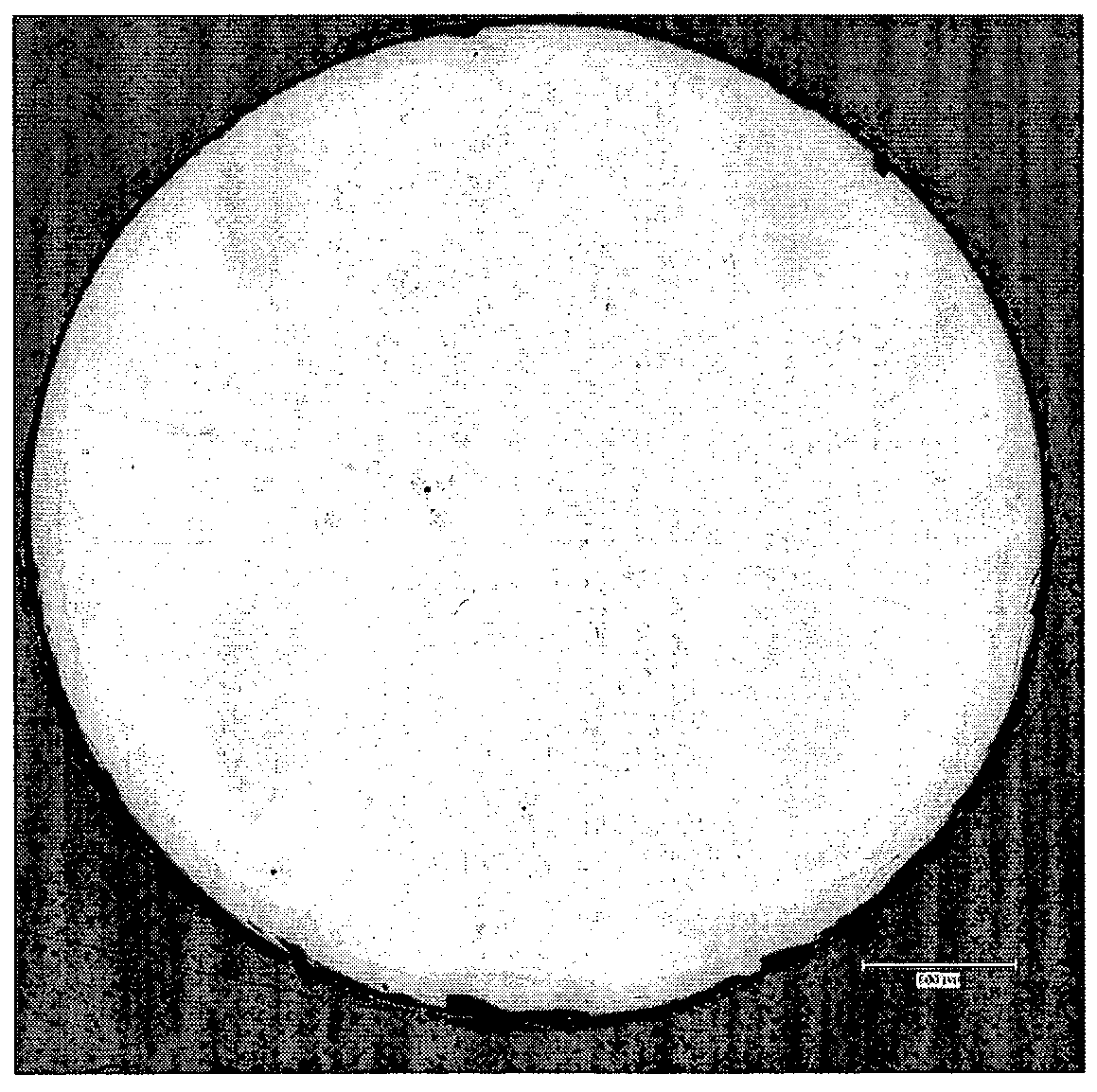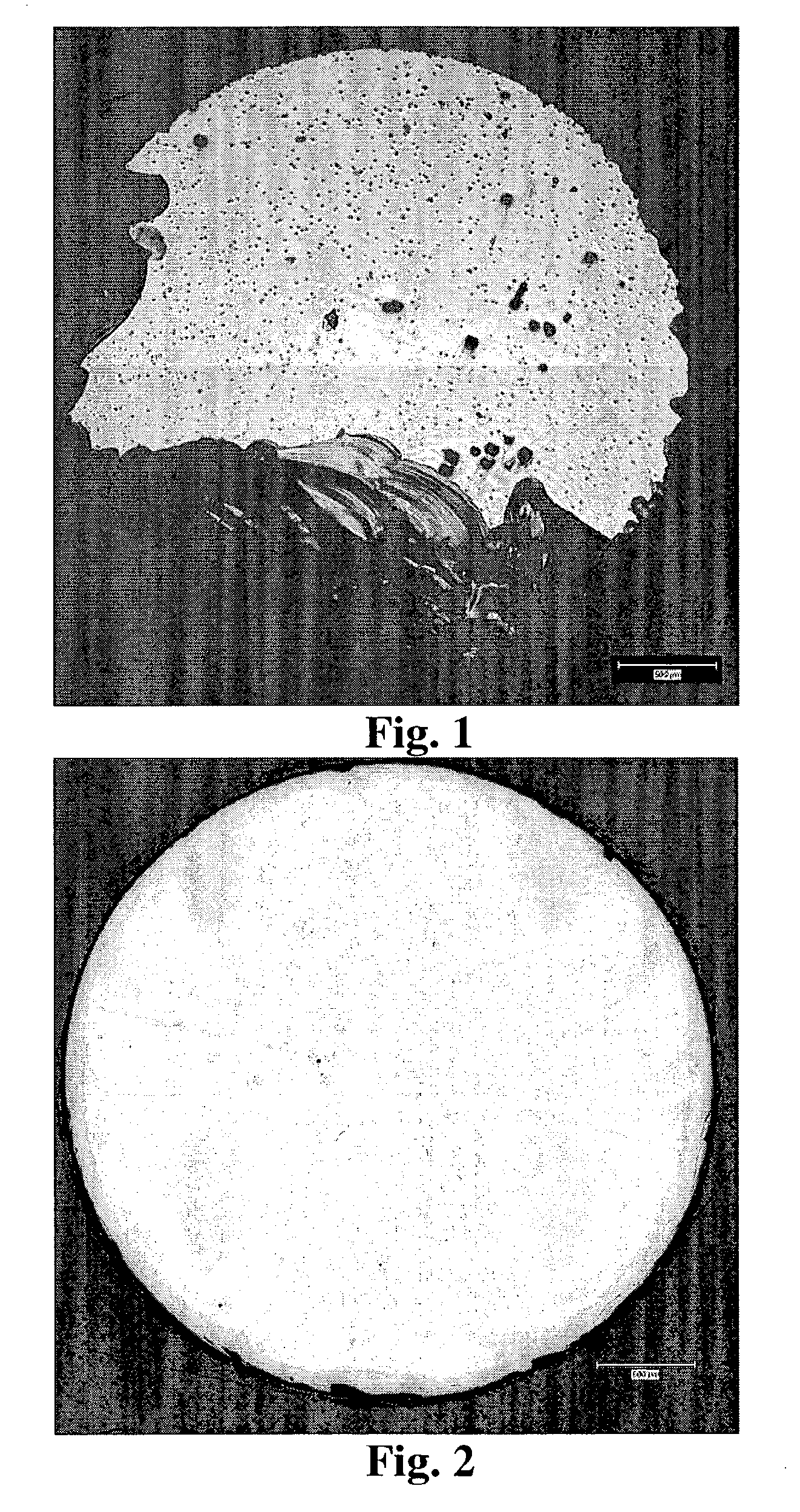Method for reducing defect concentrations in crystals
a technology of defect concentration and crystal structure, applied in the field of crystal structure, can solve the problems of deformation of epitaxial layers, defects can also exist in amorphous, degrade the quality, performance and lifetime of epitaxial layers, etc., and achieve the effect of reducing the concentration of defect defects in crystal structure and reducing the amount of strain
- Summary
- Abstract
- Description
- Claims
- Application Information
AI Technical Summary
Benefits of technology
Problems solved by technology
Method used
Image
Examples
examples
[0040]In the examples, a SiC disk, approximately 3 mm diameter by 1 mm thick, is cut from the end of a 6H—SiC boule that had been grown by conventional physical vapor transport. One surfaces of the SiC disk is finely polished and the concentration of micropipes is characterized by optical microscopy. A dark field photomicrograph of this sample prior to annealing is shown in FIG. 1. The largest dark spots in FIG. 1 are the result of voids present in the SiC boule that are intersected by the slice used to prepare the wafer. The numerous smaller dark spots in FIG. 1 are micropipes, which normally extend throughout the boule.
[0041]The SiC disk is placed inside a die along with NaCl powder and compacted into a pill. The pill is assembled into a cell and placed inside a belt press apparatus. The pill is pressurized to approximately 5.5 GPa and heated to about 1250° C. for about 30 minutes. The cell then is cooled and depressurized and removed from the press. The SiC disk is recovered from...
PUM
| Property | Measurement | Unit |
|---|---|---|
| temperature | aaaaa | aaaaa |
| diameter | aaaaa | aaaaa |
| diameter | aaaaa | aaaaa |
Abstract
Description
Claims
Application Information
 Login to View More
Login to View More - R&D
- Intellectual Property
- Life Sciences
- Materials
- Tech Scout
- Unparalleled Data Quality
- Higher Quality Content
- 60% Fewer Hallucinations
Browse by: Latest US Patents, China's latest patents, Technical Efficacy Thesaurus, Application Domain, Technology Topic, Popular Technical Reports.
© 2025 PatSnap. All rights reserved.Legal|Privacy policy|Modern Slavery Act Transparency Statement|Sitemap|About US| Contact US: help@patsnap.com


